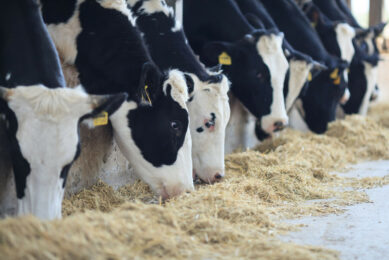In-feed carotenoid complex improves innate immunity
Chemaphor Inc. recently presented its new growth promoting alternative OxC at the Antimicrobial Stewardship in Canadian Agriculture & Veterinary Medicine Conference held in Toronto, Ontario, Canada.
Graham Burton, President & Co-Founder of Chemaphor at the conference spoke about Pathways to Complementary Medicines, providing an overview of Chemaphor’s proprietary compound, OxC-beta, and its potential as a natural alternative to antibiotics currently being used for growth promotion in feed animals.
Carotene spin-off
OxC-beta, a novel, intellectual property-protected complex formed when the micronutrient AY-carotene spontaneously and fully reacts with oxygen, displays a unique combination of immunological properties, notably, priming of innate immune function, the first line of defence, while being able to limit inflammatory conditions.
The practical benefits are illustrated in trials with swine and poultry showing that low parts-per-million dose levels of OxC-beta in feed produce results comparable to those of antibiotics.
“Unlike traditional antibiotics used in livestock agriculture, OxC-beta provides productivity gains without causing antibiotic resistance, because its action does not involve killing bacteria directly”, commented Dr. Burton.
Keeping animals healthy
“This is a complementary approach because supporting the immune system helps prevent the animals reach the more serious stage where antibiotics would be truly needed.
“In other words, OxC-beta is a product that helps animals to help keep themselves healthy. Obviously, healthy animals will grow faster.”
Presently, all products for improving growth and productivity in food animals are regulated as drugs in Canada.
The Conference identified the long-standing need for changes in the health regulations in Canada to encourage innovation that would lead to introduction into the market of non-antibiotic alternatives for reducing the use of antibiotics in agriculture.
New category class
A possibility is that a new category of low risk natural health products may be created that may extend to their use in food animal production.
AY-Carotene oxidation products have existed naturally in the plant world for ages and their wide dispersal in the environment inevitably involves continual, everyday exposure of animals via nutritional or respiratory means.
The implied safety of the long history of exposure to AY-carotene oxidation products, as are present in OxC-beta, indicates Chemaphor’s product would be a strong candidate for inclusion in this potential new regulatory class.
OxC-beta is cost-competitive with in-feed antibiotics, making it an economically viable alternative to help reduce reliance upon the sub-therapeutic use of antibiotics.











